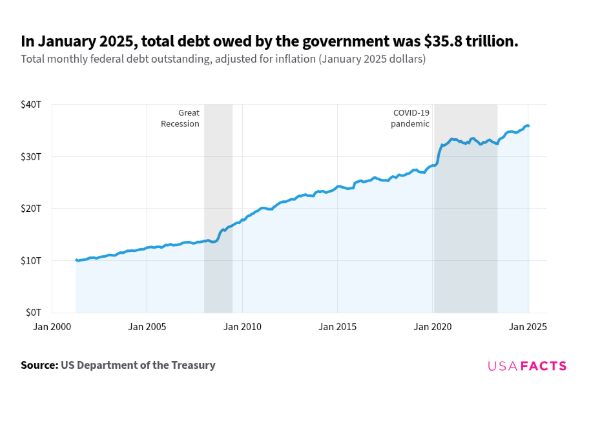Corporate Leadership.
Corporate leadership is a tenuous process. When you win, you are a genius. When you lose, you may receive a press release from the board with a statement that you and the board feel it is best for everyone if you take a different path so you can pursue new interests. I have always wondered the source of the term "new interests."
Example Of A Press Release.
Carlos Tavares has recently left Stellantis, the automobile manufacturing conglomerate. The board said it accepted Mr. Tavares' resignation and provided the following information:
Stellantis’ Senior Independent Director, Henri de Castries, commented: Stellantis’ success since its creation has been rooted in a perfect alignment between the reference shareholders, the Board and the CEO. However, in recent weeks different views have emerged which have resulted in the Board and the CEO coming to today’s decision.
Chairman John Elkann said: “Our thanks go to Carlos for his years of dedicated service and the role he has played in the creation of Stellantis, in addition to the previous turnarounds of PSA and Opel, setting us on the path to becoming a global leader in our industry.
Reading the last sentence, you might be inclined to believe the company is losing a genius; after all, he oversaw two turnarounds.
The goal of a leader is not to get the dreaded "press release" like the one above. But how do you avoid it?
Cut Costs Rationally.
There are numerous ways to succeed. I will focus on the ways to fail. Avoid these, and success is more likely. One theoretical way to be successful is to cut expenses and raise net profit. This is the "cut your way" to success strategy. The problem with this approach is it assumes that you can cut expenses and at the same time not affect income; it usually does not work well for three reasons.
The first is that management has a habit of cutting across the board, not strategically. Often, the cuts are the same percentage. Surprisingly, there is a reasonable explanation for why this occurs. If management applies the same percentage cut across the board, employees believe you are being democratic. Everyone suffers the same; employees do not seem to mind suffering if everyone suffers. This is one time that a democratic process can present a significant problem since people may accept the cuts, but the cuts are not applied cost-effectively.
The second reason cost-cutting fails is that you send a signal to your employees, your customers, and your competitors that you have a problem. Before, they thought you had a problem. Now they know you do.
Third, because of the first two, demand is highly likely to decline. The previous CEO of Stellantis discovered this. He is not the first victim of this strategy.
As the former president of a small liberal arts college, I can attest to the fact that cutting your way to success is problematic. There is no guarantee you can cut enough expenses to break even. It is far more important to increase revenue than to cut costs.
Do Not Throw Cash At A Problem.
Another mistake leaders make is assuming that they can spend so much that they can catch up with the competition; this strategy, too, is fraught with problems. The most significant is that the CEO assumes the funds can be spent effectively, when they haven't been spent that way. Pat Gelsinger of Intel, who has just been replaced, may be a victim of this strategy.
Throwing money at a problem almost always guarantees inefficiencies. Only the federal government can spend without concern for profitability, productivity, or reason. Why can the government get away with this? Simply put, we assume that is how the government operates. (See, my blog on the Department of Government Efficiency and Elon Musk (DOGE).)
Know The Difference Between A Journey And An Established Trend.
A third mistake leaders make is to confuse the beginning of a journey with a full-blown trend. During covid, I watched a lot of old movies. In one, a western, Johne Wayne charges out of a cow town on his horse hot on the trail of a group of outlaws. On his way out of town, he meets a man driving a car. The man gives Wayne directions, and off Wayne goes after the villains. He gets them.
What struck me was that you had an old John Wayne movie in which he was riding a horse, and wagons and horses lined the streets of the town. However, one technically sophisticated individual had shifted to a car. It was not a buggy; it was a car. Now, let's look at the difference between the beginning of a journey and a significant trend. If entrepreneurs had seen the car and decided to go out and build hundreds of gas stations, they would have been bankrupt long before enough cars needed to be filled up. The journey had begun, but it was the early stages of the journey; cars were not a significant trend.
Diversity, Equity And Inclusion. Are there modern-day equivalents? I can cite three. One is social: Diversity, Equity, and Inclusion (DEI). DEI is a concept that has value. After all, who can be against diversity, equity, and inclusion? The problem is that companies fail to realize that they are at the beginning of the journey on this topic: they are not a long way down the proverbial road. It is important at the beginning to go slowly and not dive into an area without considering the impact it will have; applying a little commonsense is appropriate. DEI is good; unbridled DEI is not. I know many will say we should not have to wait to address DEI, but that belies the fact that humans are not prone to embrace change quickly. Bud Light learned this lesson when it focused on DEI marketing.
Electric Vehicles. Another example is electric vehicles. Elon Musk found a niche. He built an electric car; he has had success selling them. Yet, Ford, GM, Valvo, and other automobile manufacturers have not been as successful. Volvo has abandoned its goal of only producing fully electric cars by 2030. Why haven't other car manufacturers been successful? Society is at the beginning of the EV journey. There is no demand for EVs on a broad scale. There will be, but not in the short run. Can other car manufacturers eventually sell EVs on a large scale? Absolutely. But now is not the time.
New Insurance. Finally, there is a company that has just initiated the sale of insurance to protect people against the theft of packages left on their porch or doorstep. I doubt this coverage would have been needed forty years ago; people had very little concern about leaving packages on their porches. This insurance is offered at the beginning of a journey, but soon, this may become a trend rather than the beginning of a journey. (As a former insurance regulator, I do wonder, however, how the insurance company will avoid adverse selection.)
Interestingly, if this concept is a good one, you might find a company, like Amazon, offering this type of insurance coverage. In this case, the new insurance startup will find itself competing against Amazon. Its journey may become a trend, but its success will be short-lived. Being on the leading edge of a journey does not guarantee success.
Leaders need to be aware that success is two-tenths skill and eight-tenths unadulterated luck. You can only impact the two-tenths. If you are a change agent, as discussed above, there are usually only two outcomes. Great success or failure. This is not to say that leaders should not take risks. Though it is not clear if Thomas Jefferson said, "If you want something you have never had, you must be willing to do something you have never done," it is appropriate for leaders to adopt this if they want to take risks.
Post Script: Shortly after I finished this blog, there was a tragic shooting of a CEO in New York. I will address this tragedy in a future blog where I can focus on the numerous aspects surrounding the event.
Picture by Vecteezy
If you have not read the blog that describes the "However View," click here.





